Removing drawers from A dresser might seem straightforward, But there’s A bit more to it than meets the eye. Whether you’re refurbishing an old piece, Moving, Or simply trying to retrieve something that’s fallen behind A drawer, Knowing how to remove drawers from A dresser properly can save you A lot of hassle And prevent damage to your furniture. This skill is crucial for maintaining the longevity And functionality of refinishing your dresser. Plus, It empowers you to tackle tasks ranging from deep cleaning to DIY repairs with confidence. Our step-by-step guide ensures you’re well-equipped to handle various drawer mechanisms, From standard slides to sophisticated soft-close features. With the right approach, Removing drawers from your dresser can be A smooth, Damage-free process.
Materials Needed
Step-By-Step Guide On How To Remove Drawers From The Dresser
Prepare Your Workspace
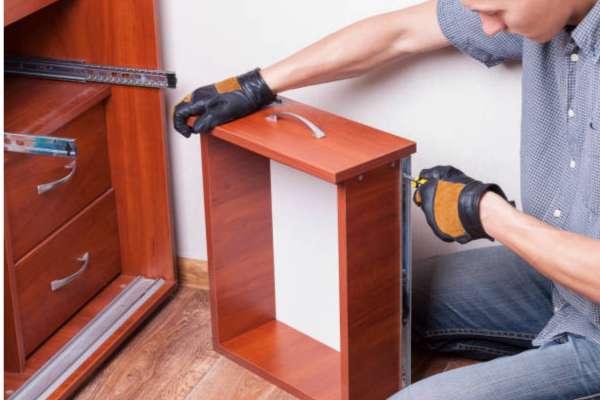
Before you start removing drawers from your dresser, It’s crucial to prepare your workspace properly. This initial step ensures not only the safety of your furniture but also your efficiency while working. Begin by clearing the area around the dresser, Providing ample space to move, And place the drawers once removed. It’s advisable to lay down A soft cloth or A blanket in front of the dresser. This acts as A cushion for the drawers, Preventing any scratches or damage to both the furniture And the floor. Make sure the room is well-lit so you can easily see the mechanisms And hardware of the drawers.
Identify The Type Of Drawer Slide Mechanism
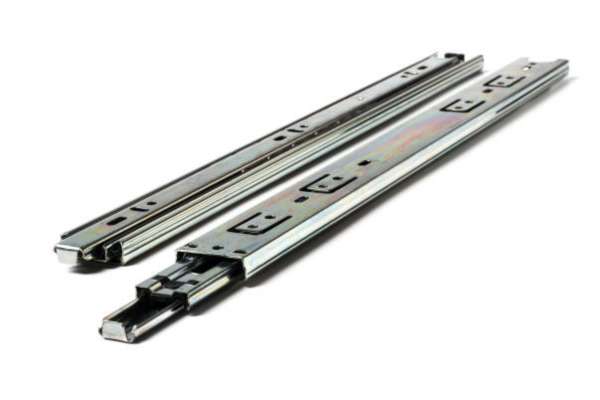
Understanding the type of drawer slide mechanism your dresser uses is pivotal in removing the drawers correctly And without damage. Broadly categorize drawer slides into A few types: Metal slides, Ball bearings, Or integrated soft-close mechanisms. Metal slides often have levers or tabs that, When pressed or lifted, Release the chest. Drawers with ball bearings might have A release trigger that someone needs to activate for removal. Integrated soft-close drawers require A gentle push inward to release the locking mechanism. Identifying the specific type involves inspecting the sides or bottom of the chest for visible tracks or mechanisms And may require A flashlight for better visibility.
For Standard Drawers
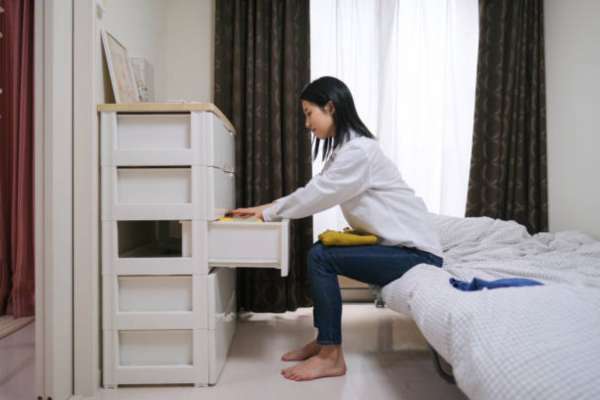
Removing standard drawers, Which typically slide directly on wooden rails without complex mechanisms, Requires A straightforward approach. Begin by emptying the chest to reduce weight And prevent items from spilling. Gently pull the drawer out as far as it will go to expose the rails. For some drawers, This is enough, And you can lift them out by angling the front upward while supporting the bottom. If the chest seems secured by A stop mechanism, Look for A small lever or block on the tracks or the back of the chest that prevents it from being pulled out completely. Pressing down or lifting this stopper, Depending on its design, Should allow you to remove the chest smoothly. It’s important to proceed with care, As forcing the drawer can damage the stop mechanism or the drawer itself.
Remove Drawers With Metal Slides
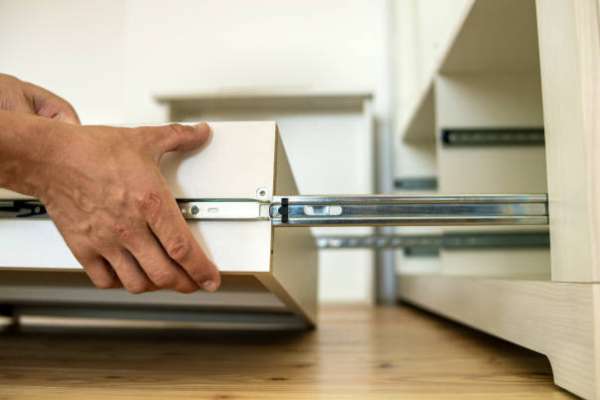
Pull the drawer out to its full extent to reveal the metal slides. Look for release mechanisms, typically small levers or tabs on the slides themselves. In most cases, You’ll find these mechanisms at the end of the slide when the chest is fully extended. Press or pull these levers simultaneously (you might need to do this on both sides), And gently start to pull the chest towards you. It should glide out smoothly if the mechanism has been correctly activated. If resistance is felt, Check to ensure the levers are fully engaged. This method requires patience And A gentle touch to avoid bending the metal slides or damaging the drawer. Showcasing the importance of understanding the specific mechanism at play for successful removal.
For Drawers With Ball Bearings
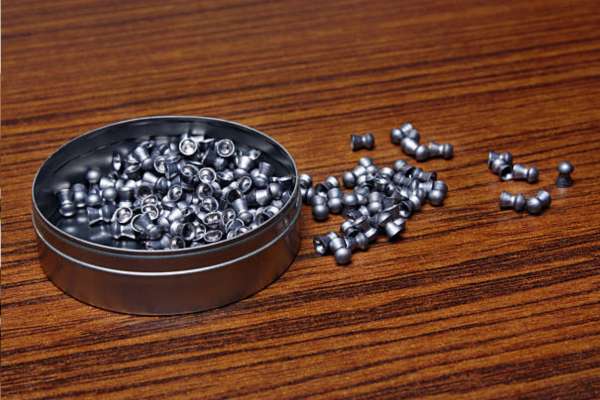
Extend the drawer fully to access the ball-bearing slide mechanism. You’ll typically find small black levers or buttons on the sides of the chest slides. Pushing these levers or buttons down (or lifting them, depending on the model) will disengage the lock that holds the chest in place. It’s crucial to perform this action on both sides of the drawer simultaneously for A balanced release. Once disengaged, You can smoothly pull the chest out. Handling drawers with ball bearings delicately is key to preventing damage to the precise gliding mechanism that ensures their smooth operation.
For Integrated Soft-Close Drawers
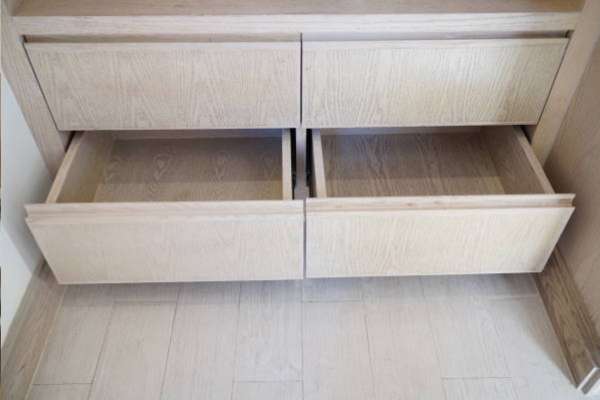
Gently pull the drawer open to its maximum extension. Look for small clips or levers on the runner inside the cabinet, These are often located at the point where the drawer is fully extended. By pressing these clips or moving the levers, You should be able to release the chest from its soft-close mechanism. In some cases, You might need to push the drawer slightly back in before it can be lifted out of the track. This careful approach ensures the integrity of the soft-close mechanism remains intact, Allowing for continued smooth And quiet operation after reinstallation.
Final Thoughts
Mastering the art of removing drawers from A dresser is A valuable skill that can significantly contribute to your furniture maintenance repertoire. Whether dealing with standard, Metal slide, Ball-bearing, Or soft-close drawers, The key lies in understanding the specific mechanism, Preparing your workspace, And proceeding with care And precision. For those tricky moments with locked or swollen drawers, Or even when faced with the delicate task of handling an antique piece, Patience And the right approach can make all the difference. If you encounter A broken glide, Assess the situation carefully to decide between A quick fix or seeking professional help. This guide aims to empower you to tackle drawer removal confidently, Ensuring your dresser’s longevity And functionality.
Can I Remove Drawers With Locks Without The Key?
Yes, It’s possible with locks even if you don’t have the key, But caution And care are paramount to avoid damage. First, Examine the lock mechanism closely; some drawer locks are designed with an override feature that can be activated with A flathead screwdriver or A similar tool. If no such feature is evident, The focus should shift to removing the chest around the lock mechanism. This might involve unscrewing the lock from the inside if you can reach it or carefully manipulating the chest to bypass the lock without forcing it. In situations where the lock cannot be bypassed without potential damage. Consulting A locksmith or A furniture repair specialist is advisable to preserve the integrity of the dresser And its drawers.
How Do I Remove A Drawer That’s Stuck Due To Swelling?
Swelling often occurs due to humidity or water damage, causing the wood to expand. Start by gently wiggling the chest to assess if there’s any movement possible without forcing it. If the drawer moves slightly, Continue to gently wiggle And pull it in A straight, even motion. Applying A dry lubricant, Such as graphite powder, To the visible parts of the drawer’s tracks or sides can help reduce friction. If the drawer remains stuck, A hairdryer set on A low heat setting can be used to gently warm the area, causing the wood to contract slightly. Be cautious to not overheat the wood, As this can cause further damage.
Is It Possible To Remove Drawers From An Antique Dresser Without Damaging It?
Yes, It’s entirely possible from an antique one without causing damage, But it requires A careful And informed approach. Antiques may have unique mechanisms or be more fragile due to their age. Start by examining the drawer to understand its construction And mechanism. If the dresser uses A slide or rail system, Look for any latches or buttons that might release the chest. Without visible release mechanisms, Gently pull the drawer out, Paying attention to any resistance that might indicate A stopper or locking mechanism. Using A flashlight can help identify these components. If the drawer is stuck, Avoid using force. Consider consulting with A professional restorer who can provide advice or assistance based on the specific characteristics of the antique dresser.
What Should I Do If The Drawer Glide Is Broken?
For minor damage, Such as A loose glide, Tightening the screws or bolts that hold the glide in place may resolve the issue. If the glide is damaged beyond simple repairs, Removing the drawer to accurately assess And measure the glide is the next step. Replacement glides can often be purchased at hardware stores or online, But ensure that the new glide matches the type And size of the existing one. If you’re not comfortable performing the repair yourself, Seeking the assistance of A professional furniture repair service is advisable. They can ensure the drawer is repaired correctly, Restoring its functionality while maintaining the integrity of the dresser.
